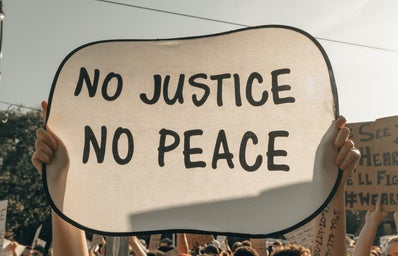TW: Rape and sexual violence
On the 14th of September 2020, in the Hathras district of the North Indian state of Uttar Pradesh, 4 men allegedly gang raped a 19-year-old Dalit girl. The girl, who was helping her family by collecting fodder in a large field, lived through hell and did not make it out alive, through no mistake of her own. Her case was just one of the 88 daily reported cases of rape in the South Asian nation.
Post the assault, the victim was taken to a police station and then hospital. Notwithstanding the trauma, she audibly named her upper caste neighbours and their friends as her assaulters. She was then transferred to a hospital in Delhi, the nation’s capital, where she succumbed to her injuries. Following her unfortunate demise, her body was cremated without the consent of her family, with the recorded cause of death being an injury to the spine. It was stated that no rape had occurred. It should be noted here that, under the Indian Penal Code, it is a punishable offence for the police not to register an incidence of rape.
The violation of women is part of a broader story of the state of women’s safety in the nation. The disregard for sexual violence and every violated woman that is silenced slowly breaks the nation.
The girl’s caste plays a role in how the case was reported. The case sparked rage due to the intersection of sex and caste-based violence. India’s caste system is among the world’s oldest surviving forms of social stratification and is characterized by endogamy. This form of social classification was initially based on the hereditary transferral of an occupation intergenerationally. The result was the creation of a hierarchy in social interaction and, in turn, exclusion based on apparent racial purity. A person is considered a member of the caste into which he or she is born and remains confined to that caste until death.
This 2,000-year-old outdated system consists of four principal varnas, or large caste categories. These are, in order of precedence based off occupational hierarchy, the Brahmins (priests and teachers), the Ksyatriyas (rulers and soldiers), the Vaisyas (merchants and traders), and the Shudras (laborers and artisans). A fifth category, falling outside the varna system, consists of those known as “untouchables” or Dalits; they are often assigned tasks too “contaminating” to merit inclusion within the traditional varna system. These duties include activities such as manual scavenging and garbage collecting.
Communities across the nation have long been divided based on these castes, with people belonging to upper and lower castes living in separate areas. The system bestowed many privileges on the upper castes while sanctioning oppression of those belonging to lower castes. The unjust and regressive system has remained, trapping people into fixed social orders from which it is virtually impossible to escape despite the implementation of positive discrimination by the government. Research shows that hard boundaries were set by British colonial rulers, who made caste a defining social feature in their collection of census data.
Despite the constitutional abolition of this discriminatory practise in 1950, “untouchability” remains very much prevalent in India today. Constituting over one-sixth of the country’s population, Dalits continue to endure near complete social ostracization. “Untouchables” may not cross over from their part of the village to that occupied by higher castes. They may not drink from the same wells as those used by upper caste members or visit the same places of worship. Dalit children are frequently made to sit at the back of, or even outside, classrooms. These children are also forced to clean school lavatories. People belonging to the upper castes still largely do not accept food or drink from the Harijans or Dalits, much to the disbelief of cosmopolitans.
India Untouched is an incredible, eye-opening documentary reporting on the current state of caste discrimination. The film is especially educational for those privileged enough not to have encountered India’s caste system.
Reverting to the rape at Hathras, the girl’s caste is imperative in the conversation about the systemic and unrelenting violence faced by those in the Dalit community, an issue often ignored by mainstream media. Violence against the Dalit community, especially the women, is used by the dominant castes to demonstrate the ceaseless presence of caste power. Positioned at the bottom of all hierarchies, Dalit women are often subject to sexual violence, which is used as a tool to exercise superiority. Data collected by the National Crime Records Bureau in 2019 suggest that nearly 10 Dalit women were raped daily, an incredibly high statistic that is going all but unnoticed.
As a nation, we are institutionally failing victims of both sex and caste-based violence. We need change from the grassroot and national level. And we need it immediately.



